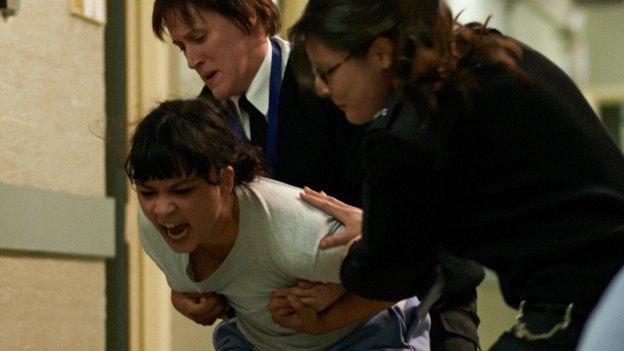Rob Roy director says being working class was 'big bonus' in Hollywood
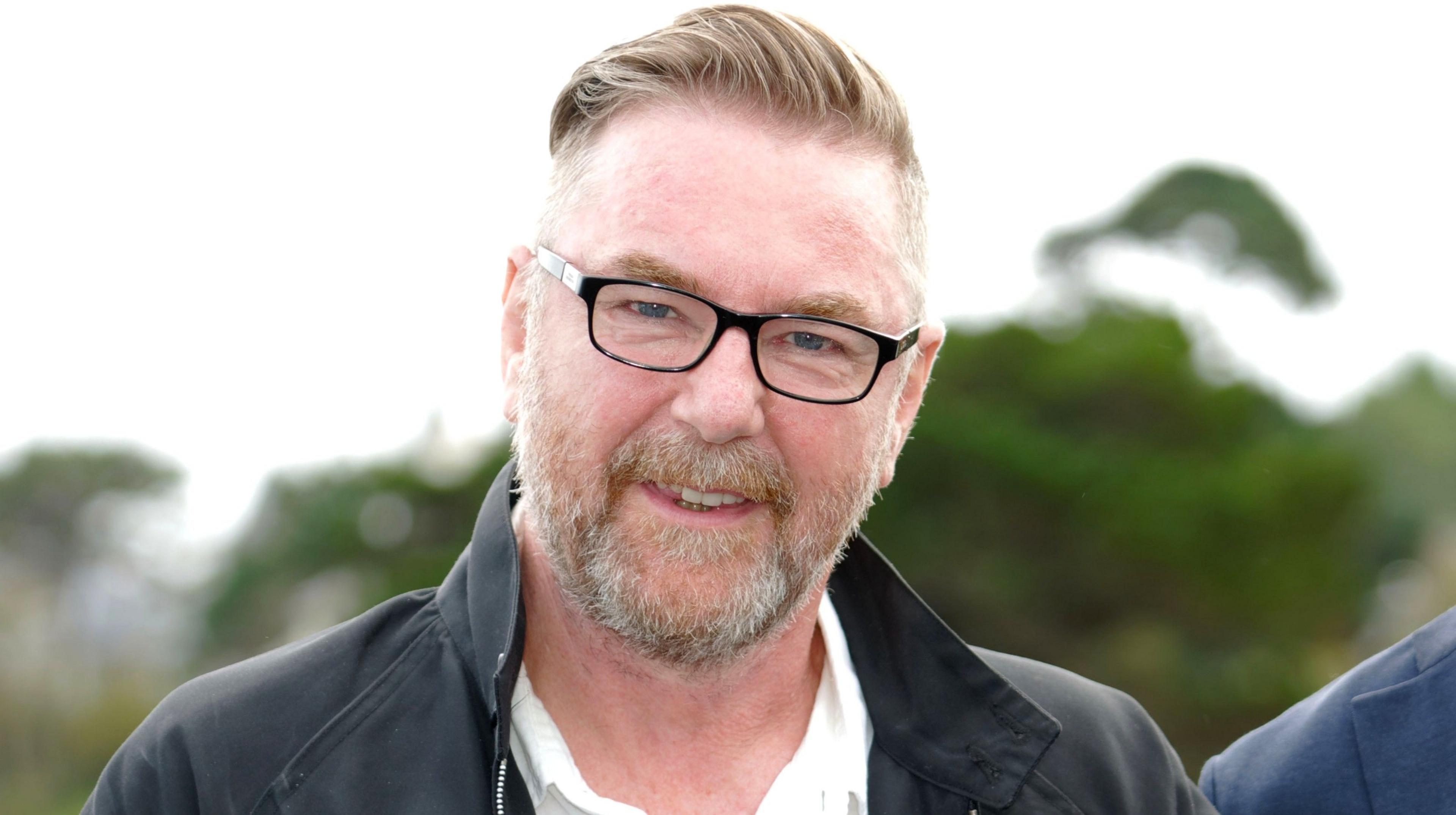
Director Michael Caton-Jones is in front of the camera for once
- Published
Michael Caton-Jones has directed some of the biggest names in the business including Leonardo DiCaprio, Robert De Niro and Jessica Lange.
But today he is in front of the camera as filming of a new documentary about his own rags-to-riches story gets underway in his home town of Broxburn, West Lothian.
The 68-year-old director said he wasn't immediately convinced about the project, which is being made by Scottish production companies Two Rivers Media and Partickular Films in collaboration with Stranger Things actor Matthew Modine's new production house,
"My first response was embarrassment because I'm not one for bigging myself up," he says.
"But then I thought, it's not really about you. It's about where you come from.
"It's about showing that this is my job, this is what I do."
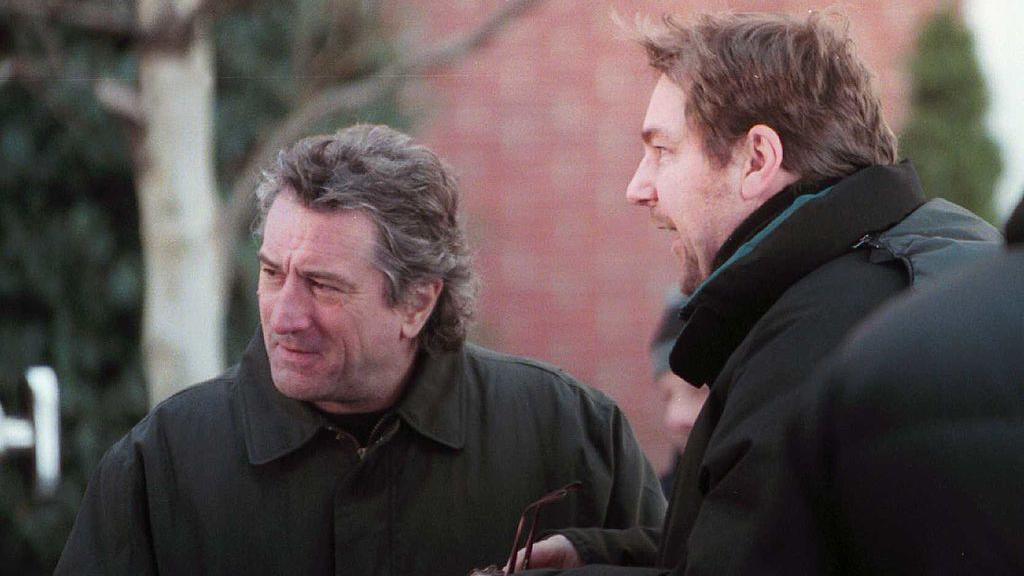
Caton-Jones directed Robert De Niro in City By The Sea
Born in Broxburn in 1957, Caton-Jones's first introduction to film was at his local cinema, the Regal, where he went most Saturday mornings for children's screenings.
"It was as much a social outing as anything else," he says.
"Parents would take their kids down to the cinema and drop them off and that was it - mayhem for an hour or so with five, six, seven-year-olds, just going bananas.
"It was fantastic and something to look forward to every week."
Later, he developed an entrepreneurial streak which would stand him in good stead for the world of Hollywood, as he delivered posters for the cinema to locations around the town in exchange for tickets to screenings.
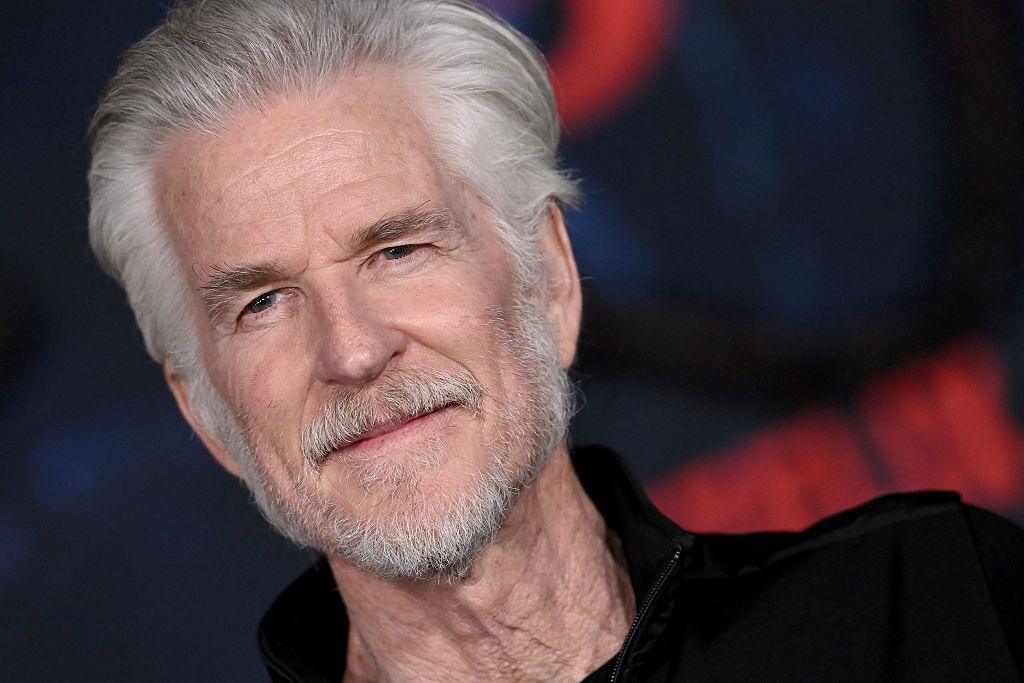
The new documentary is being made with Memphis Belle and Stranger Things actor Matthew Modine's production company
Caton-Jones left school at 15 with few qualifications and Scotland soon after that, and the film explores how he learned his craft in London's theatreland, and a place at the National Film and Television School.
His first feature film was Scandal in 1989 and it established him as a director worth hiring. It was swiftly followed by World War 2 drama Memphis Belle, which starred a young Matthew Modine as Captain Dennis Dearborn.
"In retrospect, I can see that being Scottish and having the working class upbringing I had was a big bonus for me in many ways," says Caton-Jones.
"In Hollywood, it kept me centred. I had a great time. I enjoyed making films. It got me to travel the world.
"I saw some amazing things, met some incredible people, ate some really good food.
"I would recommend it to anybody."
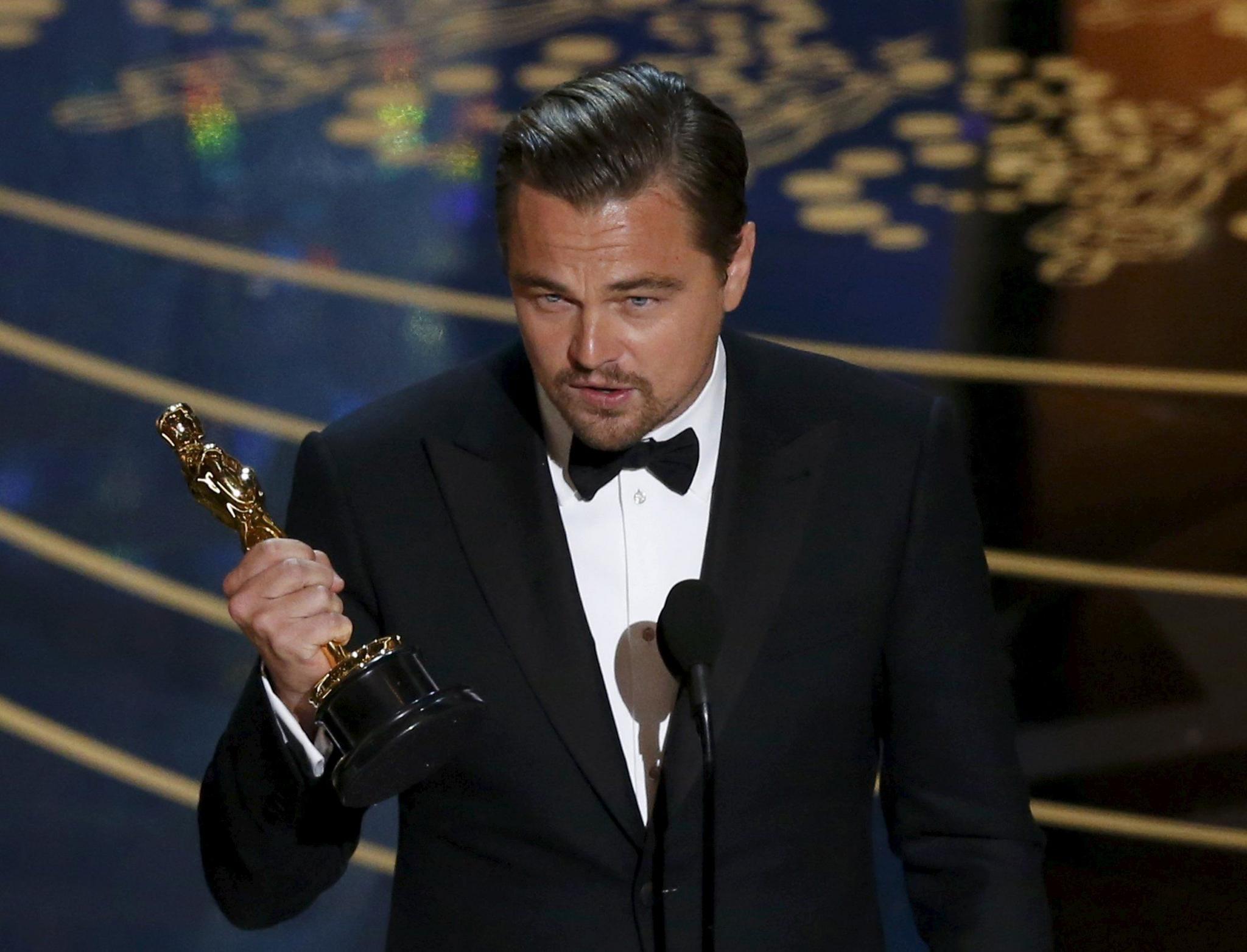
Leonardo DiCaprio paid tribute to Michael Caton-Jones in his Oscar acceptance speech in 2016
In 1993, he made This Boy's Life, a true life coming-of-age story set in the 1950s, and was instrumental in casting a 16-year-old Leonardo DiCaprio in his first screen role alongside Robert De Niro.
In 2016, when he won an Oscar for his role in The Revenant, Di Caprio thanked Caton-Jones for that breakthrough role.
"I'm very proud of Leonardo. He was a sponge. He wanted to learn," Caton-Jones says.
"But he was a bit of an indulged wee kid and essentially I played his big brother while we were making the film.
"Because he was in every single scene in the film the best thing I could do was keep him thinking this was a game and we were playing around.
"But I was aware at the time that he was extraordinarily talented."
Another good call was casting Tim Roth in Rob Roy.
His roles in Quentin Tarantino's Reservoir Dogs and Pulp Fiction had made him a hot name in film, so he wasn't convinced by plans for a Scottish "western" called Rob Roy - or the idea that he should play the ruthless, powdered villain Archie Cunningham.
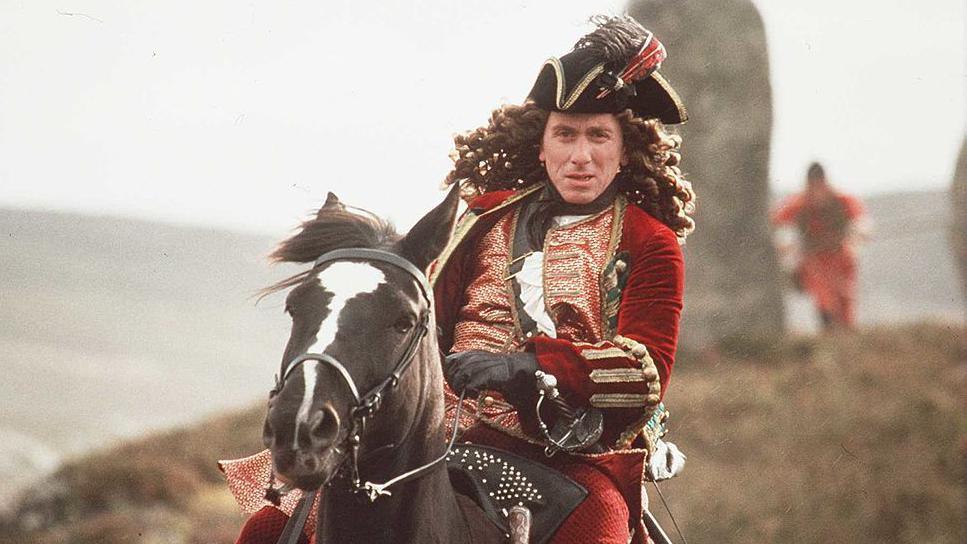
Tim Roth wasn't sure about the role of Archie Cunningham in Rob Roy
In fact, his memorable turn led to a BAFTA win and an Oscar nomination. But the film fared less well commercially than 1995's other big Scottish epic.
"I was aware of Braveheart when they were making it," says Caton-Jones. "I knew what they were going to make because I'd read the script.
"And I knew that they had a bucketload of money, and we didn't have so much.
"My plan was to use the landscape and figures in the landscape as opposed to an army in the landscape.
"I think Rob Roy is the more Scottish film whereas Braveheart could be anywhere.
"It's just a wild group of painted faces with good teeth."

Caton-Jones, left, on the red carpet in Cannes with actors Sharon Stone and David Morrissey.
Rob Roy cost an estimated £28m dollars whereas Braveheart had almost three times that amount - but despite the pressures of budget, the smaller film included some unforgettable scenes.
"To this day, Rob Roy remains one of my favourite movies of the 1990s," says Adam Rackoff, Matthew Modine's producing partner at Cinco Dedos Peliculas.
"The end sword fight might be the most realistic ever put to film."

Jessica Lange and Liam Neeson played Rob Roy MacGregor and his wife Mary
Caton-Jones said he looked to Japanese director Akira Kurosawa for inspiration, as well as sword master Bill Hobbs.
The key to the scene was practice, but the other trick was to pare it back from the planned crowd scene to the two protagonists.
"We'd spent a quarter of a million dollars on wigs and costumes and extras but I went to the producer and said we've got to lose it all," says Caton-Jones.
"It changed the scene and made it personal. Like a sheriff and a bad cowboy coming in to have a gunfight."
He did the same with the soundtrack, removing everything but the sound of the swords.
"And when you took all that out, you could hear people breathe in the audience," he says.
"They were holding their breath as they were watching it. I wasn't aware that it was going to have this effect. I'm really proud of it."
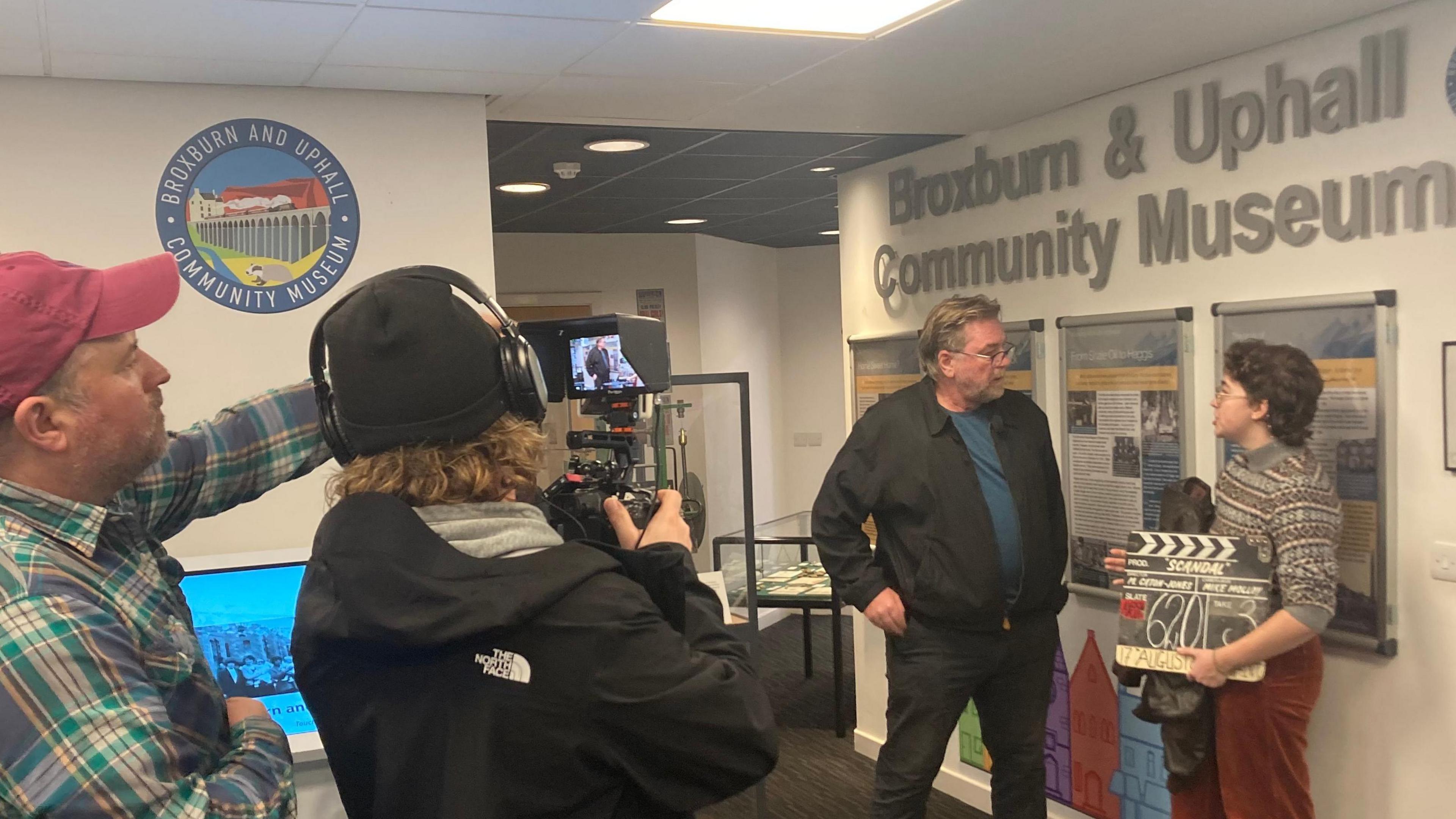
Caton-Jones returns to Broxburn as part of the film about his life and career
Caton-Jones's most recent Scottish film was Our Ladies, based on the Alan Warner novel The Sopranos, about a school choir on a day trip from Oban.
And although he still has plenty of ideas for future projects, the industry has changed since his debut.
"At the moment, I'm in what's called development hell," he says. "So I have many projects that I'm trying to push forward.
"It's a period of flux for the film business. I made films in the studio system and that's kind of gone now."
For now, the film he's most interested in is the one they're making about his own story, which will hopefully be released next year, alongside an exhibition devoted to his story at the Broxburn Strathbrock Partnership community centre.
And while he's still a little sheepish about the attention being lavished on him, he's coming round to the idea.
"I am part of the history of this place," he says. "And if I can encourage some kid sitting in a council house who thinks their life is not going to amount to much, I am absolute proof positive that you can."
- Published23 June 2022
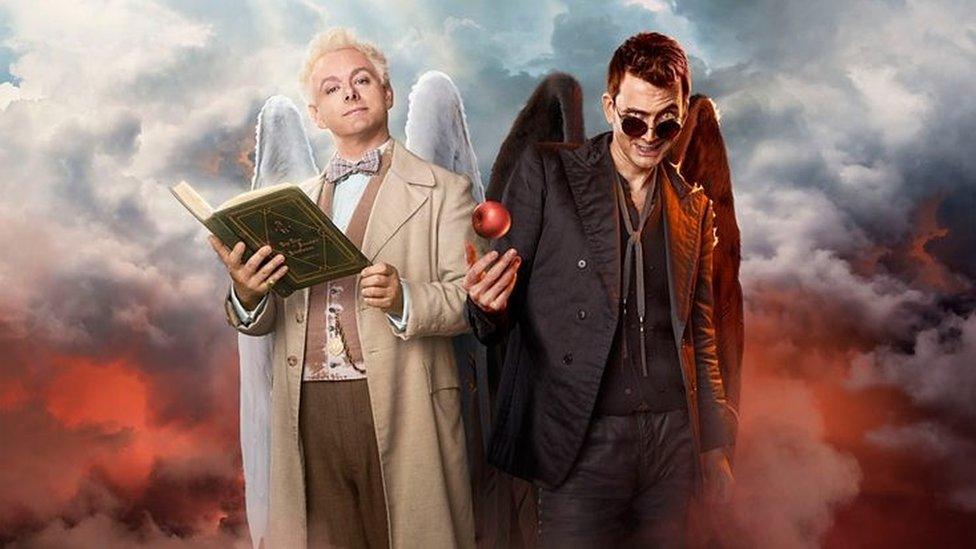
- Published16 September 2015
